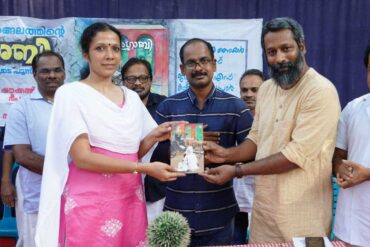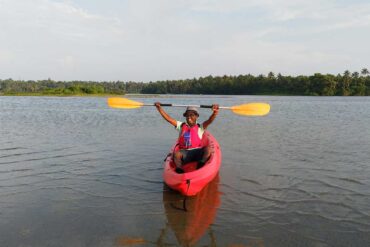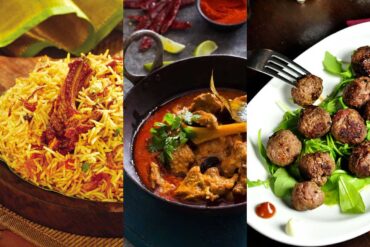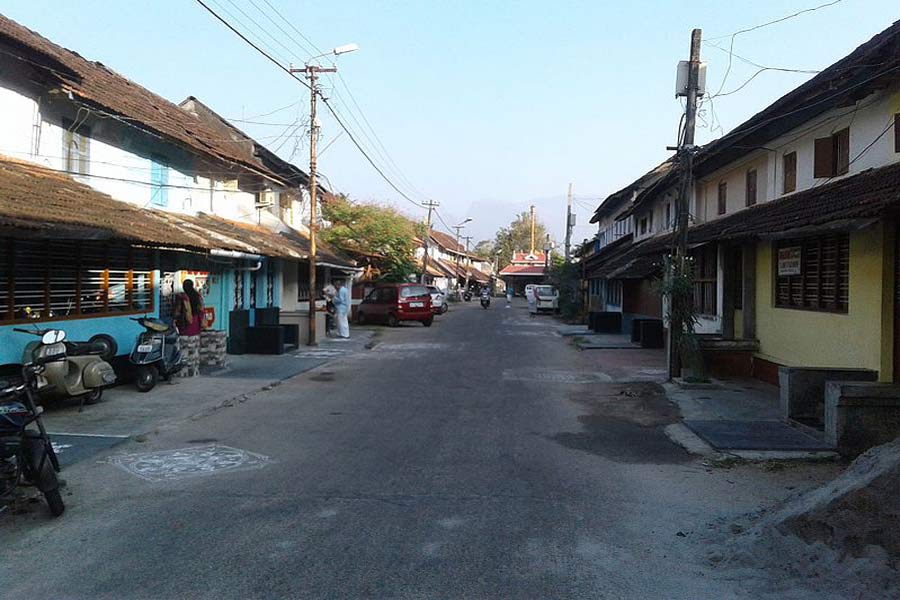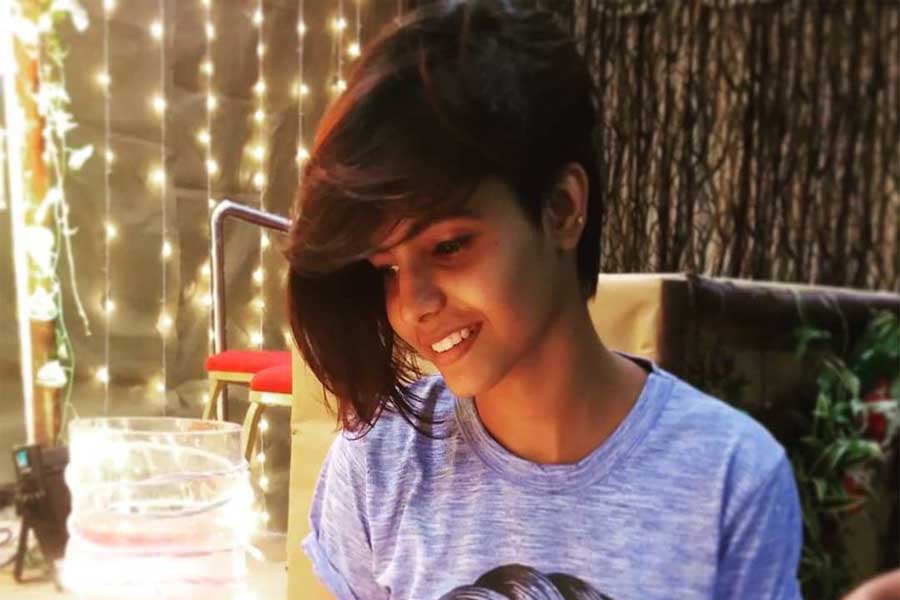It has been several centuries since the Tamil Brahmins migrated from Thanjavur and surrounding areas to Kalpathy, on the outskirts of Palakkad town, in Kerala. Kalpathy has preserved its unique culture and heritage that is far removed from that of their neighbors’ outside the community. The row houses of the village, whose kitchens still prepare the traditional cuisine, retain its old world charm.
On a typical morning, the heady aroma of filter coffee accompanied by the chanting of Vedic hymns by Brahmins with scared ash on their foreheads, welcomes you to the village. Women wearing kanakambaram flowers on their head can be seen drawing the traditional kolams in the courtyards. The village has always attracted the curiosity of outsiders and the annual Radholsavam (car festival) at the local temple is a big draw. Tourists descend in hordes, especially from foreign locales, to experience the perfect blend of music, rituals and the pulling of the traditional chariots.
The village caught the headlines for all the wrong reasons when Justice V Chitambaresh of the Kerala High Court—at a Tamil Brahmin global meet at Kochi, where a large number of the participants were from Kalpathy—described Brahmins as ‘twice born’ with ‘all good qualities.’ The speech by a sitting judge denouncing caste-based reservation for socially backward communities brought on scathing criticism for its open exhortation for economic reservation, apart from placing Brahmins above all other castes and communities. J Chitambaresh, a native of Kalpathy, had brought the heritage village once again into focus with his controversial statement.
While the judge waxed eloquent about the sterling character and lofty thinking of the residents of Kalpathy and all other Brahmin agraharams of Kerala, there’s a dark chapter in Kalpathy’s history which is little known. Untouchability was highly prevalent in Kalpathy even in 1920s despite attempts of community members like T R Krishna Swamy—a Gandhian, who tried his best to inculcate values of harmony and coexistence. (Read: The Untouchable Brahmin who fought Kalpathy’s Orthodoxy)
The members of the Ezhava community were denied the use of the roads through this Brahmin village and the right to worship in the village temple. To counter this heinous practice, the members of the Ezhava community in Palakkad organized a rebellion. Despite the then British Presidency of Madras, under which Palakkad and Kalpathy fell, issued an order permitting Ezhavas to enter Kalpathy, the conservative Brahmins of the village resisted the attempt. Many an Ezhava was roughed up by the Brahmins for attempting to enter the village.
Though the Kalpathy rebellion was as much a resistance as the famous Vaikkom temple entry satyagraha, it remained an obscure footnote in Kerala history. It was the effort of a set of local social workers led by Boban Mattumantha that brought to light some of the unknown facts of the Ezhava rebellion against the Brahmin might.
The Ezhava rebellion had a simple philosophy that there must not be any bar on people travelling on the public roads constructed using money from the government exchequer. Demanding entry into Kalpathy, Ezhavas of Chenganniyur, Thenkurissi, Panayur, Kottekkad and Vilayanchathanur met on October 24, 1917 at Yakkara temple premises under the leadership of Tamil scholar Nadesa Pillai. Terming the right to walk on any road as a fundamental right, the meeting adopted a resolution.
The Ezhavas were sceptical about the Home Rule Movement involving upper castes and its stress on coexistence. They thought the upper caste people in the Home Rule Movement would finally cheat them and the caste based discrimination would continue to exist once their demands raised before the British government were fulfilled.
Though the five-year negotiations between the Brahmins and Ezhavas had failed to reach a consensus on Kalpathy entry, they convened a mammoth meeting on March 31, 1923. C Krishnan, a social reformer and editor of the journal Mithavaadi (Reformist), presided over the meeting and reformers Sahodaran Ayyappan, Sathyavratha Swami and Sadu Sivaprasad were the key speakers on the occasion. The meeting attended by delegates from the then princely states of Travancore and Kochi had come as an eye opener to the British government.
An order was issued on September 25, 1924 from Fort St George, Madras, the headquarters of Madras Presidency, which declared illegal the prevention of any person from any religion or caste or community from entering public roads, government offices and places of public interest. It also allowed all people to draw water from all public wells.
The order turned into a powerful tool in the hands of Ezhavas and they demanded entry to Kalpathy from November 13 to 15, 1924 to take part in the annual car festival. On assurances of safety by the British officials, hundreds of Ezhavas of Palakkad reached the entry point of Kalpathy on November 13, 1924 in the evening. The Brahmins of Kalpathy resisted their entry violently; stones were pelted on Ezhava leaders and many were severely beaten up. Leaders like Thachamoochikkal Chami, Damodaran and Padamanabhan were badly injured but undeterred more Ezhavas arrived at scene knowing fully well about the violence they would encounter. Fearing further clashes, the British authorities clamped prohibitory orders in Kalpathy and its surroundings, and the Ezhavas retreated.
However, the issue was raised in the Madras Assembly by R Veerayyan, seeking steps to end the discrimination. Reformers Sree Narayana Guru and T K Madhavan had visited Palakkad and extended support to the agitating Ezhavas. The community decided to embark on another attempt to enter Kalpathy on December 10, 1924, albeit peacefully.
Before that could happen, a five-member commission was constituted by the British government to look into caste-based discriminations, and the rally was cancelled at its request. The commission conducted hearings in Palakkad during first week of January 1925. There were heated exchanges between the 18 Brahmins and the 11 Ezhavas who appeared before the commission.
Finally, on January 9, 1925, the historic order allowing people of all castes to enter into Kalpathy roads had been promulgated. There ended the discrimination that had lasted for several centuries. The success of Kalpathy rebellion inspired many social reform movements in Kerala and it boosted the morale of all the untouchables of Palakkad region.
“The Kalpathy uprising of Ezahavas against Brahmin hegemony must be researched more by historians and social scientists. It carries lessons for the contemporary period where upper caste notions still cripple the concept of equality and justice.” – Sunny Kapikkad (Dalit Scholar)

